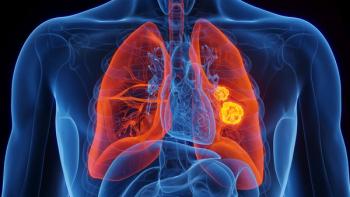
- June 2022 Immunization Guide for Pharmacists
The Role of Hospital Pharmacists in Administering and Supporting Immunizations in Health Systems
Vaccinations are a critical preventive vaccinations are a critical preventive health measure and are routinely recommended from an early age. Indeed, the first hepatitis B vaccine in the series can be administered within 12 to 24 hours of birth.
Vaccinations are a critical preventive vaccinations are a critical preventive health measure and are routinely recommended from an early age. Indeed, the first hepatitis B vaccine in the series can be administered within 12 to 24 hours of birth.1 Although children receive many vaccinations during routine pediatric visits, adults typically receive vaccinations from a primary care provider (PCP) or at a community pharmacy. In 2018, almost 70% of adults received an influenza vaccine at a doctor’s office or retail health clinic.2 In addition to these locations, vaccinations also may be provided at hospitals and emergency departments (EDs), which provide a safety net for those who may not otherwise have access. Although most vaccines are administered by nurses in the hospital setting, there is still a role for the hospital pharmacist. This article explores the role of hospital pharmacists in administering and supporting immunizations, including in inpatient, ED, and ambulatory settings.
Immunizations Support in the Inpatient Setting
Many hospitals are part of larger health care systems, which may encompass a traditional inpatient hospital, urgent care and emergency centers, ambulatory clinics, retail pharmacies, and private physician offices. Health systems typically follow 1 systemwide medication formulary. Hospital pharmacists are integral members of pharmacy and therapeutics committees, and as medication experts, they often guide formulary decisions.3 Based on their knowledge and clinical expertise, pharmacists may be called upon to manage the formulary placement of vaccines. For example, influenza and pneumococcal vaccines are 2 common vaccines administered to inpatients. Pharmacists can be involved in programming clinical decision support interventions into electronic health records to identify patients who may be eligible for these vaccines. Potential clinical decision support interventions may include standing orders or collaborative practice agreements.4 Hospital pharmacists also can provide vaccinations to health system employees and counseling to inpatients who decline a vaccination.5
Beyond inpatient or employee vaccination, hospital pharmacists also may be called upon to implement and oversee mass vaccination clinics.6 For example, drawing on their experience in providing pop-up influenza vaccine clinics for employees during the COVID-19 pandemic, hospital pharmacists were able to set up vaccine clinics and provide education regarding COVID-19 vaccines.7 Inpatient vaccination has shown to be an effective means of providing COVID-19 vaccine doses and booster doses, and hospital pharmacists played an integral part in both planning for and administering these vaccines.8,9
Another unique role for hospital pharmacists is the identification of patients who are asplenic due to trauma, surgery, or past medical history.10 Patients who lack a functioning spleen are at risk of severe infection from encapsulated bacteria, and Haemophilus influenzae type b, meningococcal ACWY, meningococcal type B, pneumococcal, and annual influenza vaccines are recommended for these patients. Hospital pharmacists can identify patients who need these vaccines and administer the vaccines while these patients are in the hospital or refer them to colleagues for follow-up after discharge.
Hospital pharmacists also can play an important role in vaccine reconciliation. Vaccine reconciliation is important because patients may receive vaccines in a variety of health care settings. Similar to medication reconciliation, nurses ask about vaccinations during screening interviews; however, patient recollection of vaccinations can be inaccurate.11 Evidence has shown that implementing a multidisciplinary approach that involves nurses working together with pharmacy staff and employing protocols to identify and follow up on patients who are eligible for vaccines can increase rates of inpatient vaccination.12,13 Furthermore, granting pharmacists access to state immunization information systems can make it easier to maintain more complete vaccination records, at least for vaccines administered within the same state.12
Immunization Support in the ED
The ED is another area where hospital pharmacists can be involved in vaccination efforts. Approximately 25% of Americans do not have a PCP14 and thus may use the ED for routine care. When an individual is in the ED, there is an opportunity for education and to provide preventive vaccinations, especially if the patient does not have a PCP. ED visits can be an avenue for successful vaccination programs against influenza,15 COVID-19,16,17 and hepatitis A.18 Hospital pharmacists can administer first vaccine doses and play a key role in coordinating appointments for individuals to receive subsequent doses of multidose series. These vaccine efforts can be applied to other disease outbreaks or pandemics.
Immunization Support in Ambulatory Clinics
Pharmacists employed at ambulatory clinics also make vaccine recommendations, provide education regarding vaccines, and administer vaccinations. Patients may expe- rience improved continuity during transitions of care from the inpatient or ED setting to the ambulatory clinic setting, especially when the ambulatory clinic is part of the same health system. Also, patients may have better insurance coverage when visiting an outpatient clinic via utilization of outpatient or pharmacy benefits, and such visits may result in revenue for the institution.
An evolving niche for ambulatory pharmacists is the establishment of vaccine clinics for patients about to undergo immunosuppressive therapy.19 With the increase in use of monoclonal antibodies and other immunosuppressive medications for a variety of diseases related to immune system dysfunction (eg, Crohn disease, psoriasis, multiple sclerosis), pharmacists are poised to screen patients and provide recommendations regarding vaccines, particularly before patients initiate immunosuppressive medication.
Conclusions
Although the administration of vaccines is not traditionally viewed as part of the responsibilities of hospital pharmacists, based on their knowledge and experience regarding the provision of vaccines, pharmacists can help with vaccination in many ways and in a variety of health care settings. As hospitals continue to expand and evolve into health systems and share accountability for patient care, hospital pharmacists will continue to expand their roles regarding immunizations.
About The Author
Monica V. Mahoney, PharmD, BCPS, BCIDP, is a clinical specialist in outpatient infectious diseases at Beth Israel Deaconess Medical Center in Boston, Massachusetts.
References
1. Child & adolescent immunization schedule. Recommendations for ages
18 years or younger, United States, 2022. Centers for Disease Control and Prevention. Updated February 17, 2022. Accessed May 13, 2022. https://www. cdc.gov/vaccines/schedules/hcp/imz/child-adolescent.html
2. Amin K, Rae M, Artiga S, Young G, Ramirez G. Where do Americans get vaccines and how much does it cost to administer them? Peterson-KFF Health System Tracker. February 12, 2021. Accessed May 13, 2022. https:// www.healthsystemtracker.org/chart-collection/where-do-americans-get- vaccines-and-how-much-does-it-cost-to-administer-them/
3. Ciccarello C, Leber MB, Leonard MC, et al. ASHP Guidelines on the Phar- macy and Therapeutics Committee and the Formulary System. Am J Health Syst Pharm. 2021;78(10):907-918. doi:10.1093/ajhp/zxab080
4. Orenstein EW, ElSayed-Ali O, Kandaswamy S, et al. Evaluation of a clinical decision support strategy to increase seasonal influenza vaccination among hospitalized children before inpatient discharge. JAMA Netw Open. 2021;4(7):e2117809. doi:10.1001/jamanetworkopen.2021.17809
5. Queeno BV. Evaluation of inpatient influenza and pneumococcal vaccination acceptance rates with pharmacist education. J Pharm Pract. 2017;30(2):202-208. doi:10.1177/0897190016628963
6. Gregory N. Pharmacy students play crucial role in COVID-19 mass vaccinations. Am J Health Syst Pharm. 2021;78(8):662-664. doi:10.1093/ajhp/zxab061
7. Andrade J, Slaby M, DeAngelis J, et al. Implementation of a pharmacist-led COVID-19 vaccination clinic at a community teaching hospital. Am J Health Syst Pharm. 2021;78(12):1038-1042. doi:10.1093/ajhp/zxab135
8. Freiser D, Roca M, Chung T, et al. The evolution of a hospital-based COVID-19 vaccination program for inpatients. NEJM Catal Innov Care Deliv. 2022;3(2). doi.org/10.1056/CAT.21.0340
9. Berger RE, Diaz DC, Chacko S, et al. Implementation of an inpatient COVID-19 vaccination program. NEJM Catal Innov Care Deliv. 2021;10.1056/ CAT.21.0235. doi:10.1056/CAT.21.0235
10. Scherrer LA, Benns MV, Frick C, et al. Impact of a pharmacist-led intervention on post-splenectomy vaccination adherence among trauma patients. Trauma. 2020;22(4):273-277. doi:10.1177/1460408619895695
11. Van Heiden S, Carrico RM, Wiemken TL, et al. Level of recall bias regarding pneumococcal vaccination history among adults hospitalized with community-acquired pneumonia: results from the University of Louisville Pneumonia Study. Univ Louisville J Resp Infect. 2017;1(4):9-12. doi:10.18297/ jri/vol1/iss4/3
12. Baucom A, Brizendine C, Fugit A, Dennis C. Evaluation of a pharmacy-to-dose pneumococcal vaccination protocol at an academic medical center. Ann Pharmacother. 2019;53(4):364-370. doi:10.1177/1060028018805439
13. Hill JD, Anderegg SV, Couldry RJ. Development of a pharmacy technician- driven program to improve vaccination rates at an academic medical center. Hosp Pharm. 2017;52(9):617-622. doi:10.1177/0018578717722788
14. Levine DM, Linder JA, Landon BE. Characteristics of Americans with primary care and changes over time, 2002-2015. JAMA Intern Med. 2020;180(3):463-466. doi:10.1001/jamainternmed.2019.6282
15. Baumer-Mouradian SH, Servi A, Kleinschmidt A, et al. Vaccinating in the emergency department, a model to overcome influenza vaccine hesitancy. Pediatr Qual Saf. 2021;6(2):e430. doi:10.1097/pq9.0000000000000430
16. Vaccinating patients upon discharge from hospitals, emergency departments, & urgent care centers. Centers for Disease Control and Prevention. Updated October 7, 2021. Accessed April 13, 2022. https://www.cdc.gov/vac- cines/covid-19/clinical-considerations/vaccination-upon-discharge.html
17. Rodriguez RM, Torres JR, Chang AM, et al. The Rapid Evaluation of COVID-19 Vaccination in Emergency Departments for Underserved Patients study. Ann Emerg Med. 2021;78(4):502-510. doi:10.1016/j. annemergmed.2021.05.026
18. Kaigh C, Blome A, Schreyer KE, Healy M. Emergency department-based hepatitis A vaccination program in response to an outbreak. West J Emerg Med. 2020;21(4):906-908. doi:10.5811/westjem.2020.4.45847
19. Whiskin C, Cutcliffe N. Opportunities for pharmacists in vaccinating higher-risk populations. Can Pharm J (Ott). 2019;152(6):418-423. doi:10.1177/1715163519877898
Articles in this issue
Newsletter
Stay informed on drug updates, treatment guidelines, and pharmacy practice trends—subscribe to Pharmacy Times for weekly clinical insights.
















































































































































































































